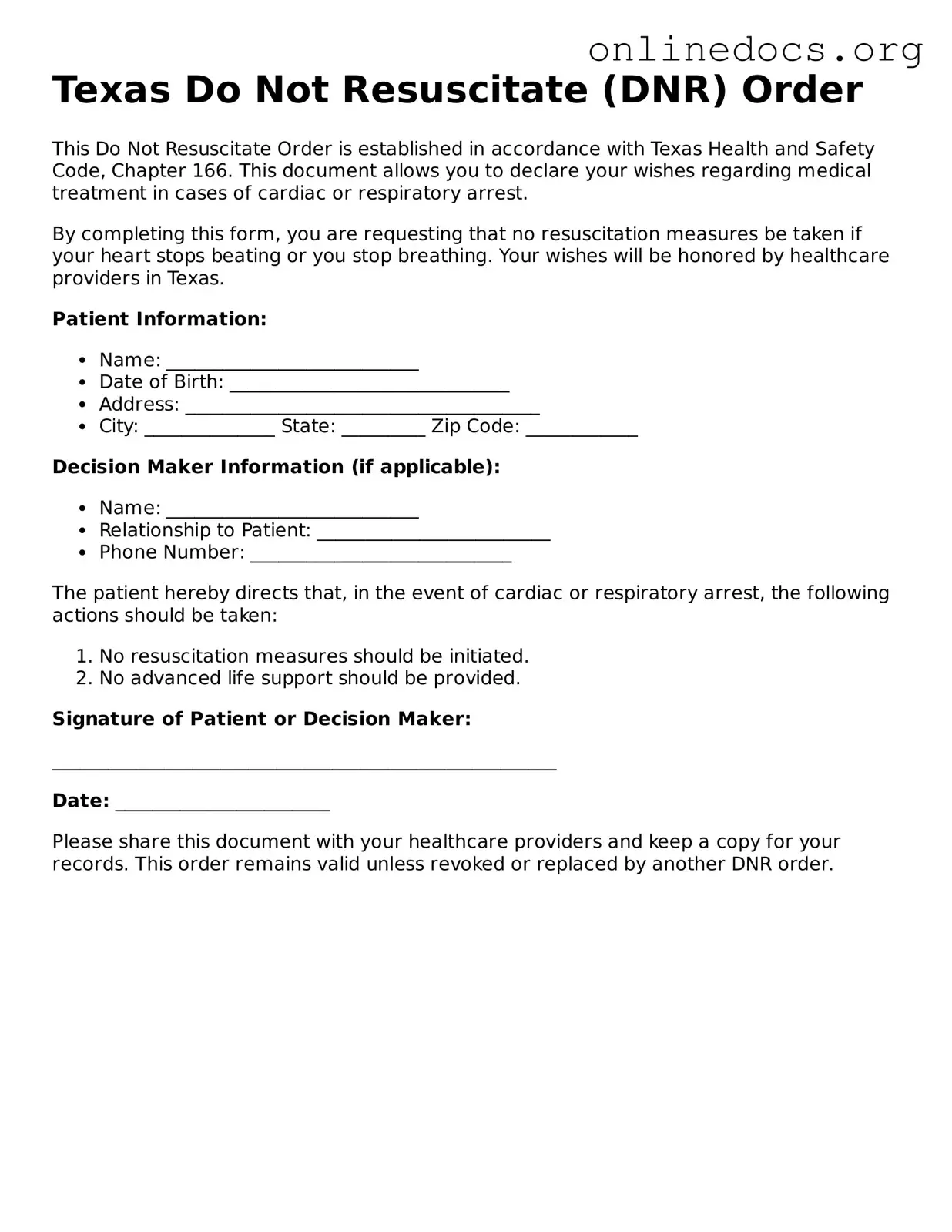The Texas Do Not Resuscitate (DNR) Order form shares similarities with an Advance Directive, which is a broader legal document that allows individuals to outline their preferences for medical treatment in the event they become unable to communicate those wishes. Like the DNR, an Advance Directive can specify a person’s desires regarding life-sustaining treatments, including resuscitation efforts. However, while the DNR focuses specifically on resuscitation, an Advance Directive covers a wider range of medical decisions, allowing individuals to express their wishes about other treatments, such as feeding tubes or mechanical ventilation.
Understanding the importance of clear agreements is crucial, particularly in situations like renting a property. The California Residential Lease Agreement serves a similar purpose by ensuring both landlords and tenants are aware of their rights and responsibilities. For those interested in formalizing such agreements, you can start by accessing the necessary forms at californiapdfforms.com/residential-lease-agreement-form.
Another document akin to the Texas DNR is a Medical Power of Attorney (MPOA). This legal instrument allows an individual to designate someone else to make medical decisions on their behalf if they are unable to do so. While the DNR provides specific instructions regarding resuscitation, the MPOA empowers the appointed person to make a variety of healthcare decisions, including whether or not to initiate resuscitation. This flexibility can be crucial, as the appointed agent can consider the full context of the patient’s health and preferences when making decisions.
A Living Will is also comparable to the Texas DNR Order. This document allows individuals to express their wishes regarding end-of-life care and the types of medical treatments they would or would not want in terminal situations. Similar to the DNR, a Living Will can address the issue of resuscitation, but it often includes additional guidance on other life-sustaining treatments. Both documents aim to ensure that a person's healthcare preferences are respected when they are unable to communicate them directly.
Finally, a Physician Orders for Life-Sustaining Treatment (POLST) form is another document that aligns closely with the Texas DNR Order. The POLST is designed for individuals with serious health conditions and translates their treatment preferences into actionable medical orders. Like the DNR, it specifies whether or not resuscitation should be attempted. However, the POLST goes further by addressing a range of medical interventions, ensuring that healthcare providers have clear instructions on the patient's wishes regarding various life-sustaining measures.
